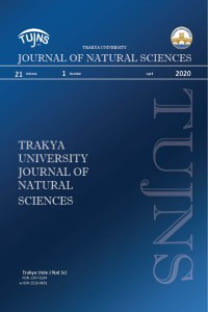NEW TRAMP ANT SPECIES FOR TURKEY: Tetramorium lanuginosum Mayr (HYMENOPTERA: FORMICIDAE)
NEW TRAMP ANT SPECIES FOR TURKEY: Tetramorium lanuginosum Mayr (HYMENOPTERA: FORMICIDAE)
___
- 1. AntWeb, 2017. Available from: https://www.antweb.org/taxonomicPage.do?rank=species& project=introducedants&images=true. (Date accessed: September 2017).
- 2. Boer, P. & Vierbergen, B. 2008. Exotic ants in The Netherlands (Hymenoptera: Formicidae). Entomologische Berichten, 68: 121-129.
- 3. Borowiec, L. 2014. Catalogue of ants of Europe, the Mediterranean Basin and adjacent regions (Hymenoptera: Formicidae). Genus, 25(1-2): 1-340.
- 4. Chown, S.L., Gremmen, N.J.M. & Gaston, K.J. 1998. Ecological biogeography of Southern Ocean islands: species-area relationships, human impacts, and conservation. The American Naturalist, 152: 562-575.
- 5. Clavero, M. & Garcia-Berthou, E. 2005. Invasive species are a leading cause of animal extinctions. Trends in Ecology & Evolution, 20: 110.
- 6. Climate-data.org. Climate data for cities worldwide. http://en.climate-data.org. (Date accessed: September 2017).
- 7. Forel, A. 1911. Aperçu sur la distribution géographique et la phylogénie des fourmis, 81-100. Memoires Ier Congres International d’Entomologie, Bruxelles, Belgium.
- 8. IUCN, 2000. Guidelines for the prevention of biodiversity loss due to biological invasion. Gland: IUCN –The World Conservation Union; 21 pp.
- 9. Ivanov, K. 2016. Exotic ants (Hymenoptera, Formicidae) of Ohio. Journal of Hymenoptera Research, 51: 203-226.
- 10. McGlynn, T.P. 1999. The worldwide transfer of ants: geographical distribution and ecological invasions. Journal of Biogeography, 26: 535-548.
- 11. Miravete, V., Roura-Pascal, N., Dunn, R.R. & Gómez, C. 2014. How many and which ant species are being accidentally moved around the world? Biology Letters, 10: 20140518.
- 12. Tursab, 2016. Turizm verileri. http://www.tursab.org.tr/tr/turizm-verileri/istatistikler/turistsayisi-ve-turizm-geliri/2003-gelirsayi-ve-ortalamaharcama_68.html. (Date accessed: March 2017).
- 13. Wetterer, J.K. 2010. Worldwide spread of the wooly ant, Tetramorium lanuginosum (Hymenoptera: Formicidae). Myrmecological News, 13: 81-88.
- ISSN: 2147-0294
- Yayın Aralığı: 2
- Başlangıç: 2000
- Yayıncı: Trakya Üniversitesi yayınevi
Gülay ECEVİT GENÇ, Şükran KÜLTÜR, İlker GENÇ
Firuze GÜLBUNAR, Gazel Burcu AYDIN, Belgin ÇAMUR-ELİPEK
İlker GENÇ, Şükran KÜLTÜR, Gülay ECEVİT-GENÇ
EPILITHIC DIATOM-BASED ECOLOGICAL ASSESSMENT IN TAŞMANLI POND (SINOP, TURKEY)
NEW TRAMP ANT SPECIES FOR TURKEY: Tetramorium lanuginosum Mayr (HYMENOPTERA: FORMICIDAE)
ASYMMETRIC VARIATIONS IN SOME SPECIES OF THE GENUS Raphignathus Dugès (ACARI: RAPHIGNATHIDAE)
Meryem BİNGÜL, Sibel DOĞAN, Salih DOĞAN
